Note: This is the second essay in an ongoing series.
Looking to the stars
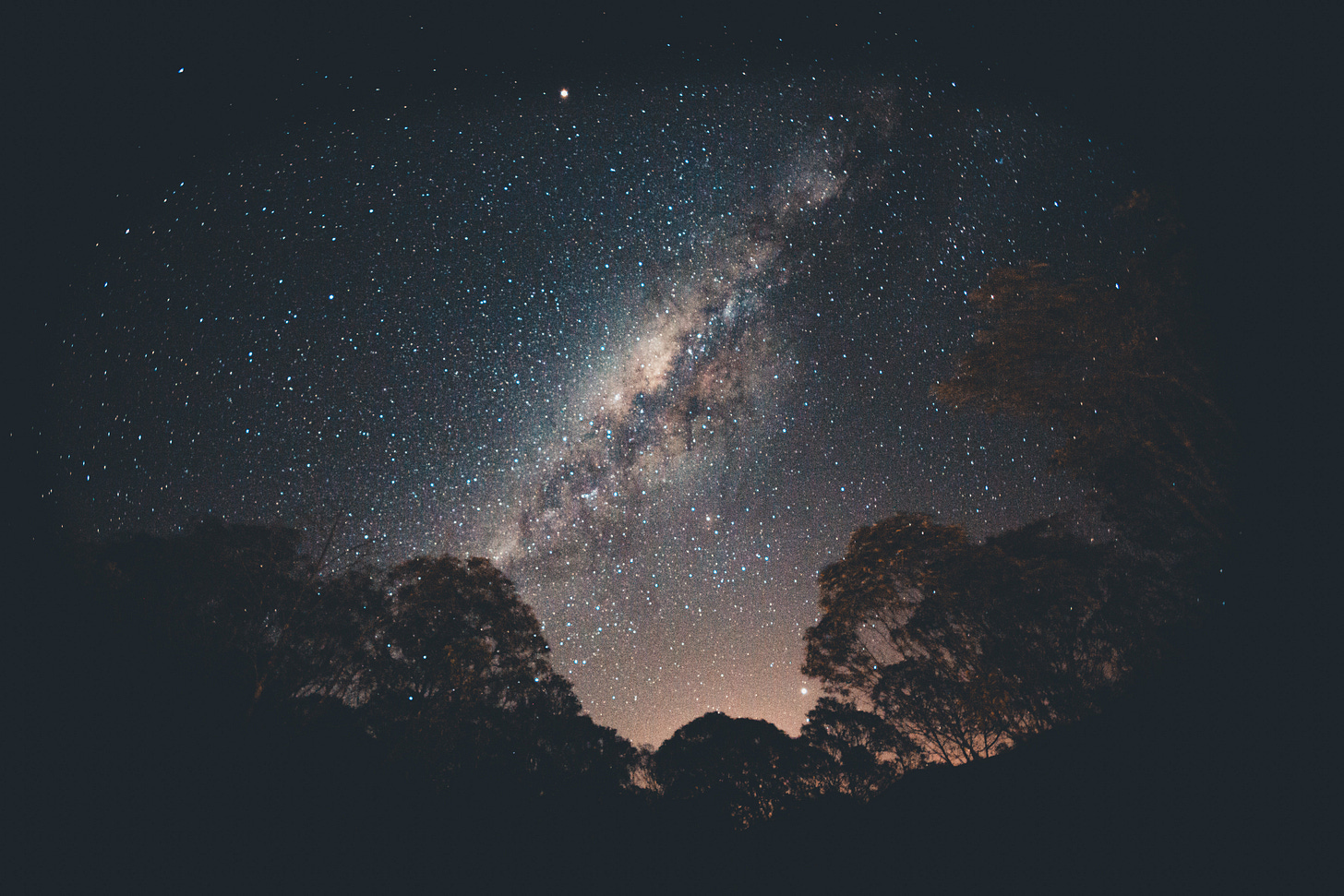
Why do we look to the stars and study space? Among many answers, the one supposing this essay is that space expands our horizons.
Throughout history, the study of space has transformed myths into wonders, expanding the reach of human intelligence from superstitions into measurable and observable phenomena. Today, profound leaps of cosmic exploration are being achieved over just years and decades, opening up vast realms for successive generations to access new frontiers of science, technology, art, and spirituality.1
The overview effect
From the perspective of orbit, we can imagine seeing our planet backdropped by the vast emptiness of space. Among the astronauts who have experienced this view, many have reported a profound shift in perspective called the overview effect, seeing our planet as a precious and delicate oasis of life. This viewpoint has become a cause for global solidarity. As a spherical canvas of natural blues, greens, browns, and swirling whites against the empty backdrop of space, the planet is seen as an integrated ecosystem of life worth protecting for future generations.2
The habitable zone
A primary building block for life on Earth is the presence of liquid water on its surface. It’s also what scientists are looking for in the search for life on other planets.
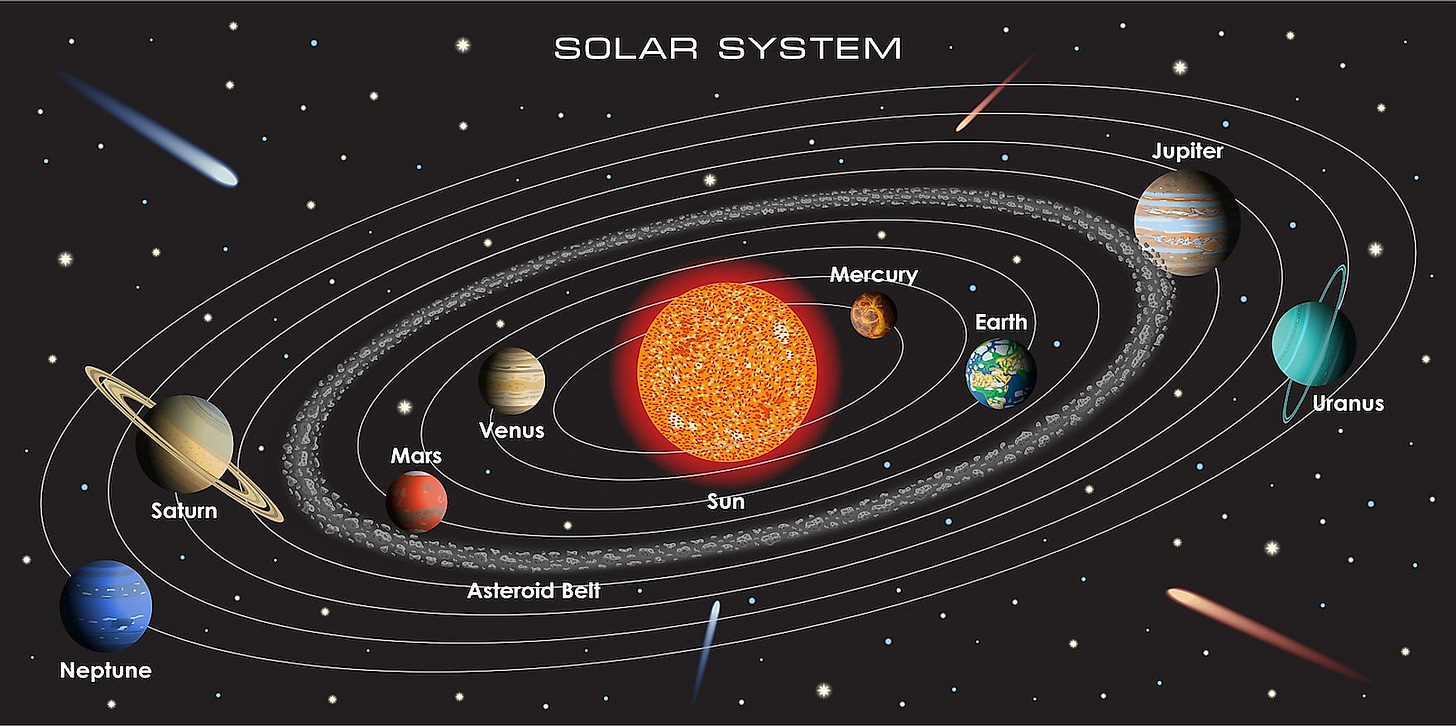
Scientists apply the habitable zone model to calculate the ideal range for a planet to be orbiting its star to have the conditions for liquid water. It’s also called the Goldilocks zone, referencing the fairy tale where a young girl tries three bowls of porridge. One is too hot, another is too cold, and the third is just the right temperature for her choosing.3
In the following model of the habitable zone, Earth is shown comfortably within it, and Mars is on the outer boundary. Life hasn’t yet been discovered on Mars or in the habitable zone of other solar systems. Venus, which is too close to the Sun in this model, also has a runaway greenhouse effect, making it far hotter and suffocating for life across the planet than if it had an atmosphere more like Earth. And although Mars is a habitable zone candidate in this model, it barely has an atmosphere. 45
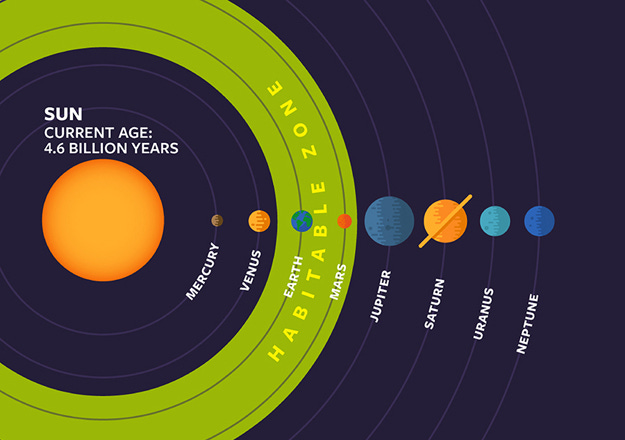
Two additional atmospheric factors supporting life on Earth are its ozone layer, which protects the planet’s surface from the Sun’s most harmful ultraviolet rays, and Earth’s magnetic field, which deflects charged particles from the Sun that would otherwise strip away the ozone layer.6
The case of ozone depletion in the 1970s and 80s is significant. Scientists discovered and proved that synthetic chlorofluorocarbons were emitting into the atmosphere and depleting the ozone layer. Fortunately, global powers took corrective action with the worldwide adoption of the Montreal Protocol, and the ozone layer has been regenerating since then. If the destruction of the ozone layer were ignored or irreparable, the impacts on life would have been detrimental.7
On Earth, scientists have classified the last 11,650 years as a geological epoch known as the Holocene, a period of uniquely stable and ideal climate conditions for life compared to previous epochs. This period coincided with the development of civilizations, which have relied on predictable climate patterns to have sustainable and effective agriculture and infrastructure systems. Unperturbed, the Holocene epoch would continue; however, the disruptive impact of human activity on the planet has led a group of scientists to propose that we’ve entered a new epoch called the Anthropocene.8

The Anthropocene Working Group (AWG) places this epoch’s beginning in the post-World War II period known as the Great Acceleration for its rapid population growth, industrialization, globalization, and the development of atomic technology.9

During this era, the predominant economic thinking has been for societies to seek a continuous upward slope of economic growth. With these schools of thought seeding today’s ecological destruction, it’s preposterous to ignore both their blind spots and also their contributions to rising living and social standards.10
Economics needs a habitable zone.
21st-century economists might frame their challenge as: how can humanity thrive within its ecological limits?
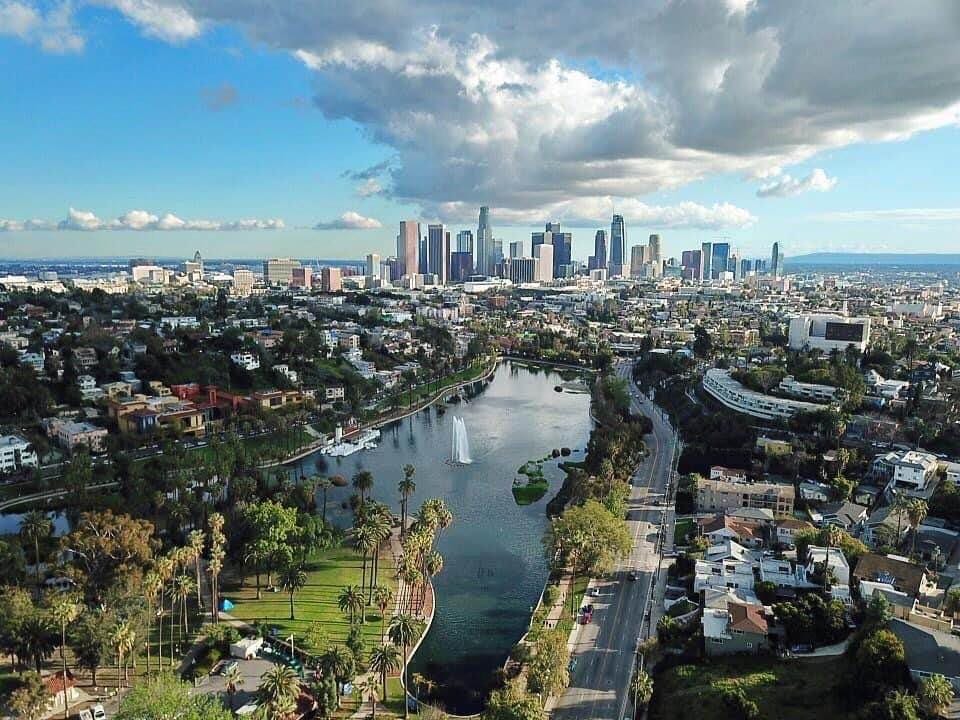
Kate Raworth, an Oxford University economist, developed the Doughnut Economics model to represent the territory for humanity to thrive between developing its social foundation (the inner range) and operating within the planet’s ecological ceiling (the outer range). In our interpretation, the model represents a habitable zone for humanity to thrive. 11

Implications for corporate purpose
Within economies that are maximizing economic growth are corporations that are maximizing their profits. The blindspots of these approaches include corporate activities that extract from social foundations and exceed the planet’s ecological ceiling.1213
Our subsequent essays examine these issues:
The third essay overviews mainstream corporate purpose theories. While profit maximization is problematic, recent shifts in corporate rhetoric have also been problematic.
The fourth essay, Cultures of Extraction, overviews the negative impacts of profit-maximizing business models and GDP growth.
The fifth essay, Cultures of Regeneration, introduces the regenerative paradigm for economic design and as a pathway for ecological recovery.
The sixth essay, Facing the Metacrisis, coalesces the inquiry into our theory of change — that it’s our collective responsibility within free societies to shape the purposes of our corporations.
“We are the first generation to know that we’re undermining the ability of the Earth system to support human development… This is a profound new insight, and it is potentially very, very scary… It is also an enormous privilege because it means that we are the first generation to know that we now need to navigate a transformation to a globally sustainable future.”14 - Johan Rockström
Published August 22, 2021 (1.0)
Updated March 16, 2024 (1.4)
[*] A book by the same title, Planetary Economics, isn’t affiliated with this essay.
[a] When Nicolaus Copernicus disproved the geocentric model (where Earth is stationary at the center of the universe) by modeling the heliocentric model, he set off a scientific revolution in Renaissance scholarship. Noteworthy, the theories of heliocentrism date much further back to the ancient Greeks (Wikipedia).
[b] Despite beliefs of a flat Earth persisting today, the science of a spherical Earth dates back to ancient Greece (Wikipedia). Exploring the human side of this issue, the YouTube channel Jubilee produced an empathic debate between flat Earth believers and scientists (h/t Joe Arbid).
The overview effect can be experienced as artwork, an IMAX film, a book, and a podcast. YouTube hosts a library of videos about the overview effect, and media about it is abundant on search engines. There’s also a non-profit called Spacebuzz that aims to give every child an experience of the overview effect using virtual reality technology.
Water Beyond Earth: The search for the life-sustaining liquid (Harvard University).
[a] A short rendition of the Goldilocks tale (DLTK) and the literary background of the story (Wikipedia).
[b] The Goldilocks analogy has been used in the economics press since the 1960s to describe an economy that is neither too hot nor too cold, but just right (Wikipedia, Wall Street Journal, The Economist).
There is some evidence that liquid water flows on Mars (NASA). Water has been found frozen at Mars’ poles and as vapor in its thin atmosphere. There are also regions of Mars that reach seasonable temperatures that are optimal for life (Wikipedia).
Atmosphere and climate of Venus (Wikipedia)
[a] Both Mars and Venus have ozone layers that are far less dense and resilient than Earth’s (European Space Agency).
[b] An illustrative video about Earth’s magnetic field (NOVA | PBS).
More about the consequences of ozone layer depletion (Wikipedia).
[a] In August 2021, a United Nations commissioned study conducted by 234 authors from 66 countries who examined more than 14,000 studies concluded that “It is unequivocal that human influence has warmed the atmosphere, ocean, and land.” (Axios)
[b] Give a listen to In the Anthropocene, a song by Nick Mulvey (h/t Benita Conde).
[a] From the mid-2019 report by the Anthropocene Working Group.
[b] The AWG report notes that “the sharpest and most globally synchronous of these signals, that may form a primary marker, is made by the artificial radionuclides spread worldwide by the thermonuclear bomb tests from the early 1950s” (Anthropocene Working Group). Their cited article points to plutonium 239, an isotope that is “rare in nature but a significant component of fallout,” and leaves a significant trace in sediments and ice caps (Can nuclear weapons fallout mark the beginning of the Anthropocene Epoch? Bulletin of the Atomic Scientists).
[a] In 2021, human activity exceeded the planet’s annual regenerative capacity on July 29. Each year, the date is getting earlier because human activity continues on an unsustainable trajectory (Earth Overshoot Day).
[b] Chart of annual carbon dioxide emissions (Our World in Data).
[a] The social foundation inside of the model aligns with the social objectives of the United Nation’s Sustainable Development Goals.
[b] The parameters of the ecological ceiling were defined by Earth-system scientists in a 2015 research article.
[c] The Doughnut Economics website offers an overview of the model with illustrations and citations (Doughnut Economics Action Lab).
Some examples of corporate activities that pull from the social foundation: unhealthy foods and beverages, addictive products, private prisons, the military-industrial complex, unhealthy working conditions, wage suppression, various forms of discrimination, tax evasion, and special interest lobbying.
Most production and consumption activities exceed at least one segment of the ecological ceiling, particularly climate change. This poses incredible challenges for well-intentioned economists, academics, policymakers, business leaders, investors, employees, consumers, and global citizens.

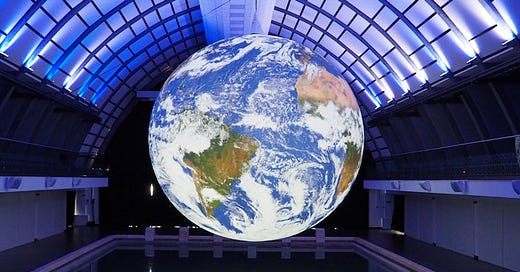


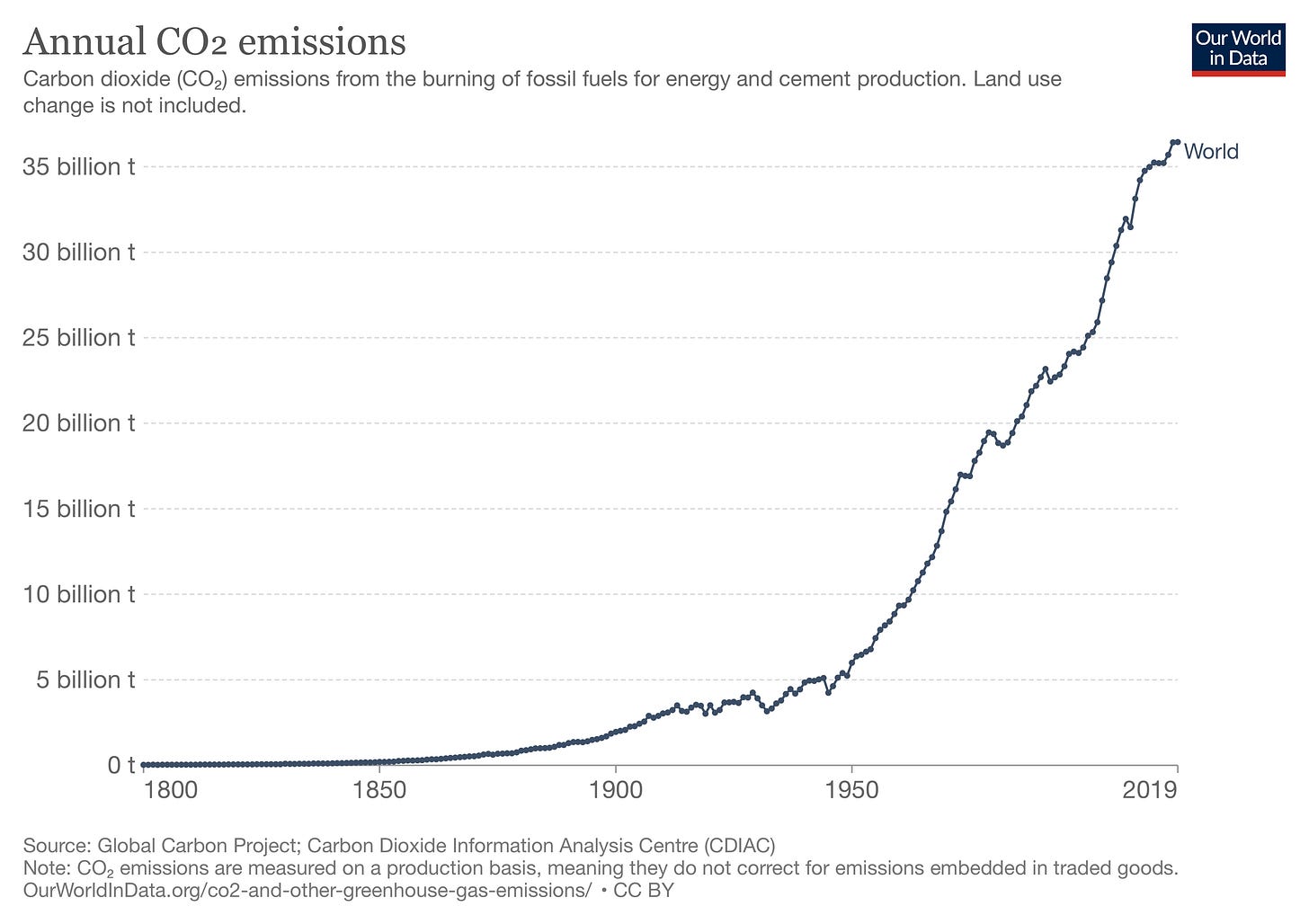
This is an excellent article! love how it ties together so many pieces of the puzzle.
Great article Mike. Just came across The Ecology of Commerce by Paul Hawken when re-organizing the book shelf. The book answers the question - “what next?” if a business wants to heed your call to change.